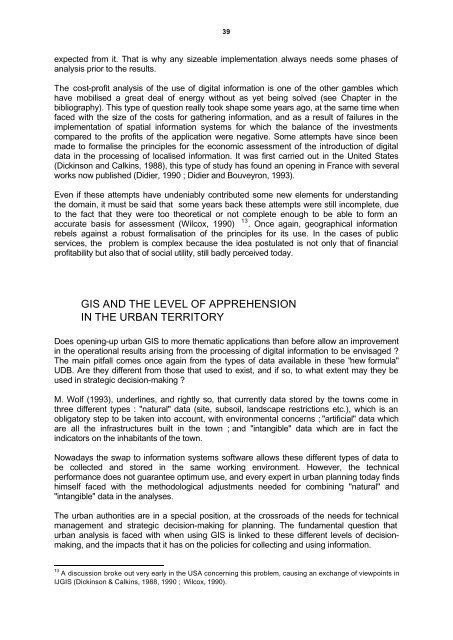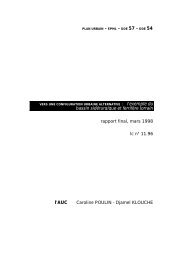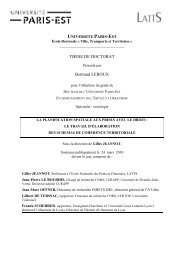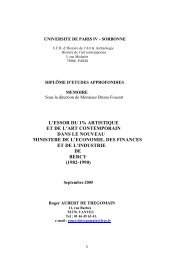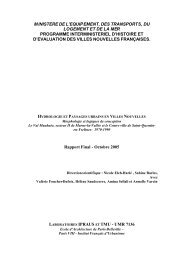Systèmes d'information géographique. Dossier ... - CiteSeerX
Systèmes d'information géographique. Dossier ... - CiteSeerX
Systèmes d'information géographique. Dossier ... - CiteSeerX
You also want an ePaper? Increase the reach of your titles
YUMPU automatically turns print PDFs into web optimized ePapers that Google loves.
39<br />
expected from it. That is why any sizeable implementation always needs some phases of<br />
analysis prior to the results.<br />
The cost-profit analysis of the use of digital information is one of the other gambles which<br />
have mobilised a great deal of energy without as yet being solved (see Chapter in the<br />
bibliography). This type of question really took shape some years ago, at the same time when<br />
faced with the size of the costs for gathering information, and as a result of failures in the<br />
implementation of spatial information systems for which the balance of the investments<br />
compared to the profits of the application were negative. Some attempts have since been<br />
made to formalise the principles for the economic assessment of the introduction of digital<br />
data in the processing of localised information. It was first carried out in the United States<br />
(Dickinson and Calkins, 1988), this type of study has found an opening in France with several<br />
works now published (Didier, 1990 ; Didier and Bouveyron, 1993).<br />
Even if these attempts have undeniably contributed some new elements for understanding<br />
the domain, it must be said that some years back these attempts were still incomplete, due<br />
to the fact that they were too theoretical or not complete enough to be able to form an<br />
accurate basis for assessment (Wilcox, 1990) 13 . Once again, geographical information<br />
rebels against a robust formalisation of the principles for its use. In the cases of public<br />
services, the problem is complex because the idea postulated is not only that of financial<br />
profitability but also that of social utility, still badly perceived today.<br />
GIS AND THE LEVEL OF APPREHENSION<br />
IN THE URBAN TERRITORY<br />
Does opening-up urban GIS to more thematic applications than before allow an improvement<br />
in the operational results arising from the processing of digital information to be envisaged ?<br />
The main pitfall comes once again from the types of data available in these "new formula"<br />
UDB. Are they different from those that used to exist, and if so, to what extent may they be<br />
used in strategic decision-making ?<br />
M. Wolf (1993), underlines, and rightly so, that currently data stored by the towns come in<br />
three different types : "natural" data (site, subsoil, landscape restrictions etc.), which is an<br />
obligatory step to be taken into account, with environmental concerns ; "artificial" data which<br />
are all the infrastructures built in the town ; and "intangible" data which are in fact the<br />
indicators on the inhabitants of the town.<br />
Nowadays the swap to information systems software allows these different types of data to<br />
be collected and stored in the same working environment. However, the technical<br />
performance does not guarantee optimum use, and every expert in urban planning today finds<br />
himself faced with the methodological adjustments needed for combining "natural" and<br />
"intangible" data in the analyses.<br />
The urban authorities are in a special position, at the crossroads of the needs for technical<br />
management and strategic decision-making for planning. The fundamental question that<br />
urban analysis is faced with when using GIS is linked to these different levels of decisionmaking,<br />
and the impacts that it has on the policies for collecting and using information.<br />
13 A discussion broke out very early in the USA concerning this problem, causing an exchange of viewpoints in<br />
IJGIS (Dickinson & Calkins, 1988, 1990 ; Wilcox, 1990).


